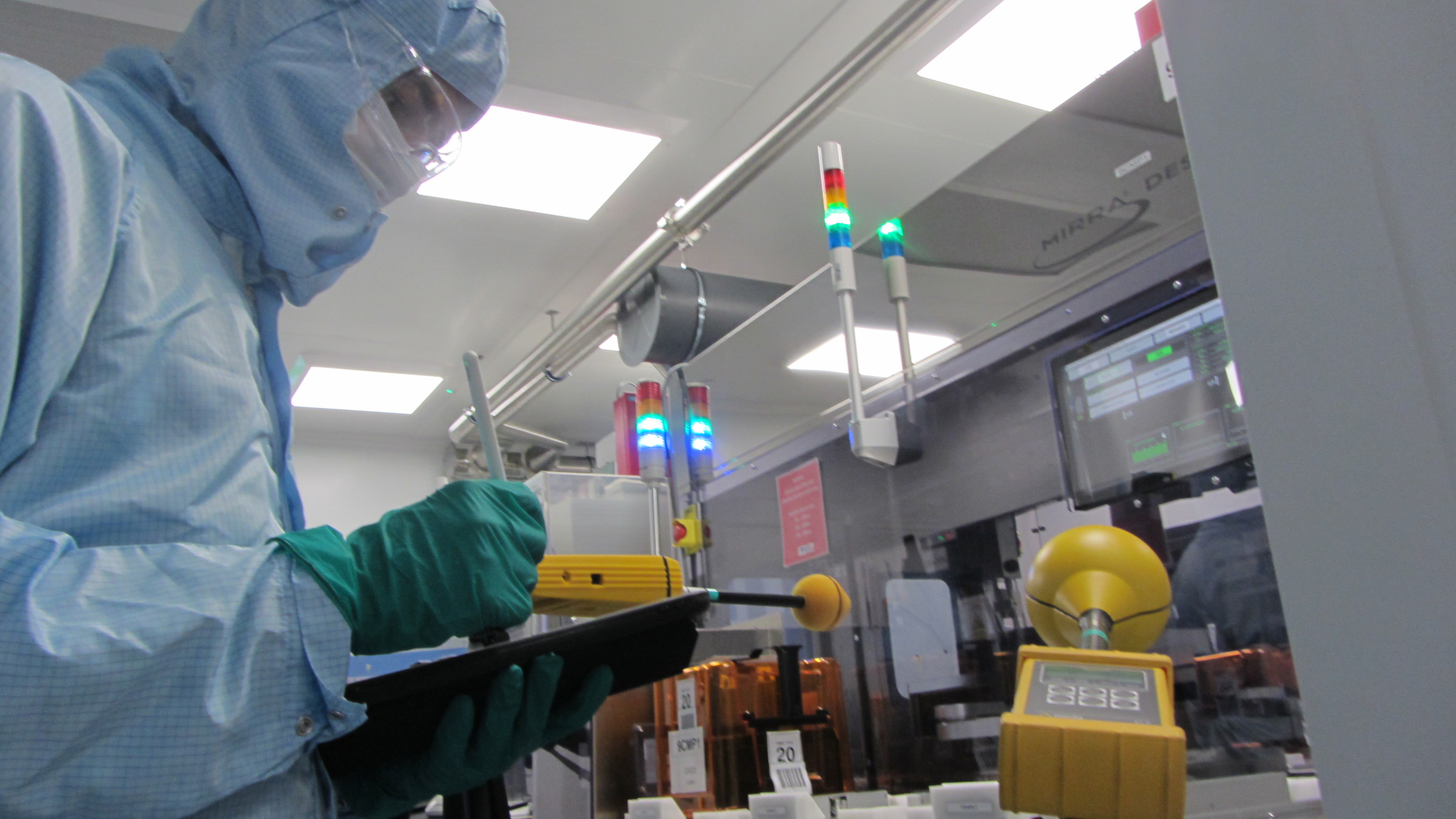UKCA Marking: Electromagnetic Compatibility Regulations Guide
The Electromagnetic Compatibility (EMC) Regulations ensure that electrical and electronic equipment a) doesn’t cause electromagnetic disturbance, or...
We're actively recruiting for a range of roles across sales, engineering, IT and warehouse. Check our careers page to see open positions including apprenticeships.

Whether you’re moving a single piece of equipment or an entire production line, our trusted team of engineers can support every step of your move, from rigging to end-to-end relocation support across the globe.

Table of Contents
In the world of shipping, it is imperative that handlers of cargo understand the items they are dealing with. Knowing the characteristics of an item and how it should be handled is necessary for both safety and smooth transportation.

ISO 780:2015 - the international regulations published by ISO, the International Organization for Standardization - include a series of graphical symbols that are used for marking distribution packages.
These universal shipping marks used in export packing indicate the type of item contained in a wooden crate. This informs handlers and makes it easier for customs officers and other officials to determine the nature of goods being shipped; preventing delays and ensuring that goods are handled appropriately. Correct shipping marks contain handling instructions and signal that certain packing regulations have been met, avoiding penalties for non-compliance.
IES has been manufacturing custom wooden crates and providing export packing services for manufacturers since 1991, working with high-technology sectors such as semiconductor, pharmaceutical and print.
In this guide, we cover the universal shipping marks used in export packing; displaying the markings, defining what they mean, and explaining when they are used.

This ‘Centre Of Gravity’ symbol is intended to indicate an object’s centre of gravity to handers. The symbol is only applied to packages with uneven weight distribution - if an item’s centre of gravity is central, this mark is not applied.
For the purposes of visibility, this marking will typically be applied to two vertical surfaces that are at right angles to each other.
Using the ‘Centre Of Gravity’ mark correctly can protect a package and its contents; helping to avoid a package with uneven weight distribution toppling over or being dropped during transit.

The ‘Clamp As Indicated’ symbol indicates where a package should be clamped by a clamp truck. It is placed on two opposite sides of a package. Clamp trucks are specialised forklifts which are particularly suitable for securely handling packages that are irregularly shaped or packed unconventionally.
It is important that the two ‘Clamp As Indicated’ marks are in the clamp truck operator’s visual range. This will allow the operator to see the symbols clearly when approaching. Only packages marked accordingly should be handled by clamp-type lifting devices.

This mark is essentially the opposite of the symbol above. It indicates that packages shouldn’t be handled by clamp trucks and other clamping devices on the sides to which it is applied.
The mark is used only to show where the package shouldn’t be clamped. The prohibition element of the symbol - that is, the cross which goes through the standard ‘Clamp as Indicated’ symbol - may be handwritten.

The ‘Do Not Roll’ mark indicates that a package should not be rolled over. This mark will typically be applied when a package contains items which cannot be overturned, including glass objects, sculptures, optical equipment or electronic devices.
ISO 780:2015 guidance states that the mark should only be used when it is necessary. It is acceptable for the prohibition element (cross) of the marking to be handwritten.

This symbol indicates that stacking of the package is not permitted and that no load should be placed on the item. The ‘Do Not Stack’ mark is important to preserve the integrity of a package in shipping or storage.
The ISO 780:2015 regulations suggest that the prohibition symbol (cross) should be added by hand immediately if the deterioration of the package is observed. When applying the marking, it is important that the symbol is displayed upright in the orientation shown.

Similar in its purpose to ‘Do Not Roll’, the Do Not Turnover mark alerts handlers that a package should not be turned over in shipping or storage. This typically applies to delicate or fragile items; from electronic devices to glass objects and pieces of art.
The mark should only be used when it is necessary, and the prohibition element (cross) of the symbol can be handwritten.

The application of the ‘Do Not Use Hand Truck Here’ symbol on the surface of a package indicates that a hand truck must not be placed on a particular side when moving an item.
It is important that this mark is only used when necessary, and the prohibition element (cross) of the symbol may be handwritten.

This symbol is to alert handlers that the contents of a package are fragile, and therefore should be handled with care.
Ideally, ‘Fragile’ markings should be applied on all four upright sides of a package, in either the left-hand upper corner or right-hand upper corner. For packages in which there is not enough space to apply the marking on all four sides, it should be applied on at least two sides, in the upper corners.
This marking should only be applied on packages which contain items that cannot be adequately protected by normal packaging.

This symbol indicates that a bag is hermetically sealed. Hermetic seals make an object completely airtight for shipment, preventing any passage of air or oxygen. Hermetically sealed bags are often used for contents such as biohazard waste, powders and laboratory or medical supplies.
Hermetically sealed bags also ensure that if contents were to be spilt, they cannot damage other items in the same package.

This symbol is a warning that a package must be kept in dry conditions, away from rain. The mark should be applied in an upright position as shown above, and should only be used when necessary.
Typically, this mark is applied to packages containing items which can easily be damaged by rain, including electronic devices, electrical equipment and components.

This symbol alerts handlers that a package should not be exposed to direct sunlight. The mark should be applied in an upright position as shown above, and should only be used when necessary.
The ‘Keep Away From Sunlight’ mark may be applied to packages containing UV-sensitive materials including plastics or rubber, or contents which shouldn’t be exposed to heat, such as electronic devices, components, and chemical substances.

This mark tells the recipient of goods how the unit should be handled during unloading.
It symbolises that the item should be lifted vertically and directly upwards, without tilting, dragging, or applying any side pressure.
The marking can be denoted with hands, slings or a forklift, depending on the size, weight and expected handling method of the goods. In the version we show here, the mark is denoted using slings.

This symbol indicates that hand hooks should not be used when handling a package. A hand hook is a tool which can be moved for moving or securing loads.
The ‘No Hand Hooks’ mark should only be used when necessary. Guidelines permit the prohibition element (cross) of the symbol to be handwritten.

The arrow symbol of the ‘Open Here’ mark is pointed towards the location of a package which should be opened first. The words ‘Open Here’ are sometimes displayed directly below the arrow.
This mark should not be confused with the pair of arrows displayed by the ‘This Way Up’ mark, which means that a package shouldn’t be laid on its side or upside down.

This symbol indicates that the packaging of a shipped item is suitable for a tropical climatic zone.
The ‘Packaging For Tropical Conditions’ symbol shows that if damage occurs to the packaging of an item, it is likely that the cargo itself will also become damaged.

The ‘Perishable Cargo” symbol marks products which need to be transported or stored under specific conditions. It indicates that the contents of a package need to be kept at a certain temperature and require refrigeration, ventilation or heating to ensure their quality and avoid spoilage.
This mark is usually used for food and beverages with a limited shelf life, such as meat or other fresh produce.

This symbol serves the purpose of reminding the recipient of a consignment that its packaging must be thrown in the bin. This may be to ensure that the packaging materials do not contaminate the environment at the destination.

The ‘Protect From Radiation’ shipping mark indicates that the product or item should be protected from exposure to radiation during transport or storage.
As represented by the word ‘FOTO’, this symbol indicates that the item in the package may be sensitive to light or requires protection from exposure to light sources. This could be important for items such as photographic film, sensitive electronic equipment, or other light-sensitive materials that could be damaged by exposure to radiation or light.

This symbol is a warning that if exposed to penetrating ionising radiation, a package may be damaged, deteriorate, or be rendered completely unusable.
The mark should only be used when necessary and should be applied in the same orientation shown above.

This common recycling symbol - also known as the Mobius Loop - indicates that packaging used for an item can be recycled.
The ‘Recyclable Material’ symbol is not intended to mean that the packaging is made from recycled materials. If the packaging contains recycled material, a % mark may be displayed within the logo, indicating the amount of recycled materials used in the production of the packaging.

This mark indicates where slings should be placed for lifting packages. When sheathed crates are lifted up with a crane while wire rope slings are not properly positioned, there is a risk of the upper frame member of the crate or skid base collapsing, causing a falling accident.
Heavy packages should be marked with the symbol, which should be placed on two opposite sides of the package. The location where the mark is applied should allow the package to be kept in a horizontal position.

This symbol means that there is a maximum stacking load that can be placed on the package when stacking. It is important to specify the maximum stacking load that is permitted on the bottom package in a stack for safety and to improve loading and storage efficiency.
The figure that indicates the maximum load mass permitted should be corrected by hand immediately if the deterioration of the package has been observed.

This mark displays the maximum number of crates or items that may be stacked on top of a bottom package. The ‘n’ in the symbol represents the limiting number, which is not inclusive of the bottom package itself.
Indicating the maximum number of crates or items that may be stacked on the bottom package is important for safety, as well as loading and storage efficiency.
If deterioration of packages is detected, the limiting number represented by ‘n’ may be corrected by hand on-site. The prohibition symbol (cross) in the marking may also be handwritten.

The ‘Temperature Limits’ mark displays the temperature limits within which packages should be handled, transported and stored. The maximum temperature is displayed at the top of the mark, with the minimum temperature at the bottom.
This symbol should only be used for packages which require temperature control.

The two upward-pointing arrows in this symbol indicate the correct upright position for a package during transportation or storage.
Guidelines state that the mark should be applied to all four upright sides of a package, near either the upper left or upper right corner. If there isn’t space on all four upright sides, the mark should be applied to the upper corners of at least two of the panels.
In the case of unit loads - when several packages are bound together - the marks should be located so that they are visible.

This mark means that fork-type lifting devices - such as forklift trucks, reach trucks and pallet jacks - should not be used in the handling or transportation of a package.
The symbol should only be used when it is necessary, and the prohibition element (cross) may be handwritten.
Stay up to date with the latest news and resources from our experts.

The Electromagnetic Compatibility (EMC) Regulations ensure that electrical and electronic equipment a) doesn’t cause electromagnetic disturbance, or...

For companies selling or supplying electrical equipment to the UK market, compliance with the Electrical Equipment (Safety) Regulations is necessary...

The Supply of Machinery (Safety) Regulations are health and safety requirements that relate to machinery used in the workplace and at home.